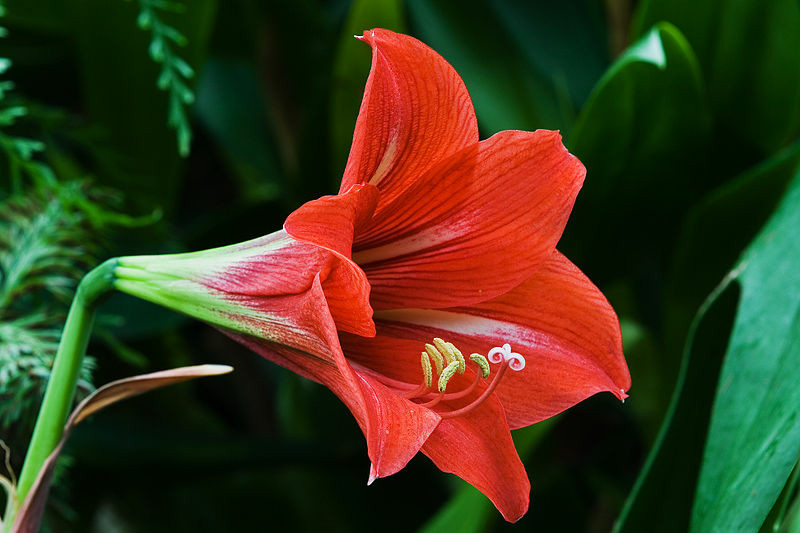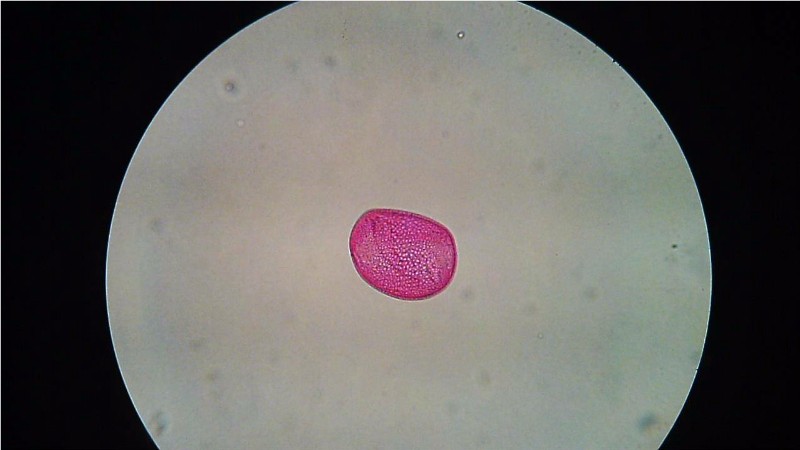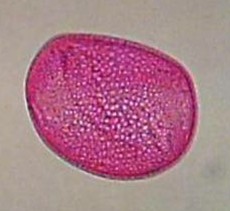Microscopy -Pollen
Honey
bees gather significant quantities of pollen to feed their young, the
pollen itself is fascinating on a microscopic level.This provides an overview of pollen preparation and its identification.
Firstly, I took a pollen load that had dropped onto the varroa floor
and made up a stained slide. Using the pollens size, colour and shape, and a number of reference pictures of pollen, I think the
pollen was from Ivy.
Making pollen slides
Making pollen microscope slides is easy is you have some basic equipment. They are prepared by placing
the pollen onto a wetted (with water) slide and gently heated on a USB
cup warmer. Once dry, a small amount of Glycerin Jelly
containing Basic Fuchsin is added which is then heated again on the cup
warmer until the glycerin has melted (approx. 50°C). A glass cover slip
is gently lowered onto the slide and the complete slide is allowed to
cool. Using some of the 'wife's' clear nail varnish around the edge of
the cover slip seals the slide permanently. The pollen is then viewed
under the microscope typically at x400. The pollen is stained pink/red
by the Glycerin Jelly containing Basic Fuchsin.
 

The above pictures show a Amaryllis flower and the corresponding pollen at magnified at x400 (center picture).
The pollen is approx. 150µm is size, and can be seen has a rather 'rough' surface.
I have a growing collection of pollen slides made from flowers, also as
previously mentioned, some pollen can be recovered directly from the
bees.
The above pictures show a primrose flower and the corresponding pollen at magnified at x400 (center picture).
The pollen is approx. 20µm is size, and can be seen has a 'lines' on the surface.
In the two examples shown above, the center pictures are at the same
scale. The pictures are directly taking via the eyepiece with a cheap USB camera.
Pollen Identification
Once the slide has been made, closer inspection by suing
the microscope allows the unique features of the pollen to be recorded.
These features are then matched to 'library' samples on the internet or in reference books.
Internet sites I have found to be useful are as follows:-
This site allows searching on approximately 700 different
types of pollen using the scientific name, and pollen size.
A useful site to view a variety of pollen from Barro Colorado Island is available at the following link
This contains 97 plates containing pictures and botanical names
The final site is linked to below, this site has been designed by the Institute of Botany, University Vienna
PalDat - Palynological Database
Books on Pollen Identification
If
you are interested in identifying pollen or want to prepare pollen
slides, two books that I would recommend are given below. Both provide
numerous drawings to help identify the pollen grains.
The first book contains a wealth of
information on pollen grains, preparation, and gives a number of
identification features, tables and pictures.
Pollen Identification for Beekeepers by Rex Sawyer
Also, to accompany this book, there is a CD with a spreadsheet linked to pollen pictures.
The second book contains a number of drawings of pollen grains.
The Pollen Grain Drawings of Dorothy Hodges.
|

